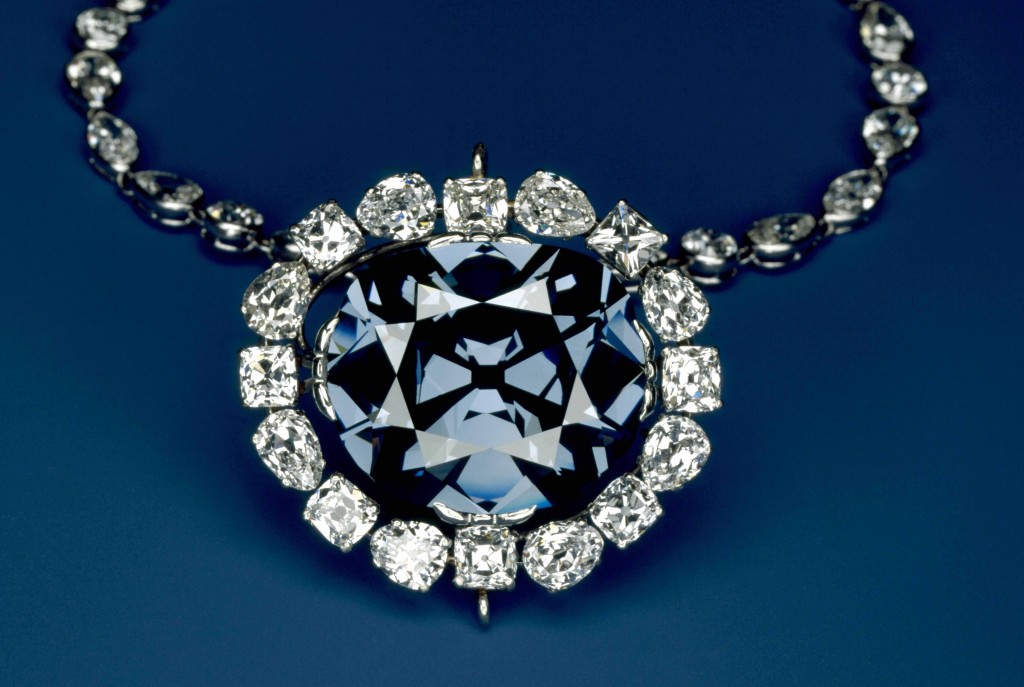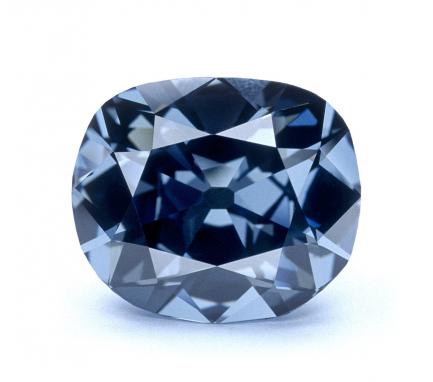Smithsonian Celebrates the 50th Anniversary of the Hope Diamond

The 45.52 carat, deep-blue Hope Diamond is shown here inside its surrounding pendant of 16 pear- and cushion-cut white diamonds. (Photo by Chip Clark)
The Smithsonian’s National Museum of Natural History is celebrating the 50th anniversary of the donation of one of the world’s most famous gems—the Hope Diamond. To mark the occasion, three contemporary settings have been designed by Harry Winston Inc. The public is invited to vote online for their favorite beginning today, Aug. 19, at www.smithsonianchannel.com/hope; voting will continue through Sept. 7.
The winning setting will be announced at the Smithsonian in Washington, D.C., this fall; however, the diamond will not be exhibited in the setting until May 2010, coinciding with the premiere of Smithsonian Channel’s “Mystery of the Hope Diamond” documentary—a definitive high-definition film about the full story of the Hope Diamond, from its birth to its mysterious journey through Europe and its final home at the Smithsonian.
From this fall until the new setting is fabricated, the 45.52-carat Hope Diamond will be exhibited as a stand-alone gem with no setting at all. Although removed from its setting on occasion for research and cleaning, this is the first time that the Hope Diamond will be on public view entirely by itself. During the past 50 years, the diamond has been in a platinum setting, surrounded by 16 white pear-shaped and cushion-cut diamonds, suspended from a chain containing 45 diamonds. The diamond will return to this original setting in late 2010.
“This is a rare and exciting opportunity for people to see the Hope Diamond as it has never been seen before,” said Cristián Samper, director of the National Museum of Natural History. “It is one of the most popular artifacts at the entire Institution—it is very fitting that we honor its Smithsonian legacy with such a unique celebration.”
The Hope Diamond is renowned for its nearly flawless clarity, rare deep-blue color and eventful history. It was formed more than a billion years ago 90 miles below the Earth’s surface. The diamond was brought to the surface by a volcanic eruption and was discovered in the 17th century in a mine in Golconda, India. The rare blue color of the jewel is attributed to light interaction with an impurity in the diamond’s internal atomic structure.
In 1668, Jean-Baptiste Tavernier, a French gem merchant, sold the diamond to King Louis XIV of France. During the French Revolution it was stolen, and subsequently had many owners, including King George IV of England and Henry Philip Hope, whose name it bears today. In 1958, its last private owner, Harry Winston, donated the diamond to the Smithsonian, where it remains today. It has been on view in the National Museum of Natural History for the past 50 years.
The Smithsonian's National Museum of Natural History, located at 10th Street and Constitution Avenue N.W. in Washington, D.C., welcomed more than 7 million visitors in 2008. The museum is open daily from 10 a.m. to 5:30 p.m. Admission is free. More information about the museum is available at www.mnh.si.edu or by calling (202) 633-1000, TTY (202) 633-5285.
# # #
SI-371-2009

